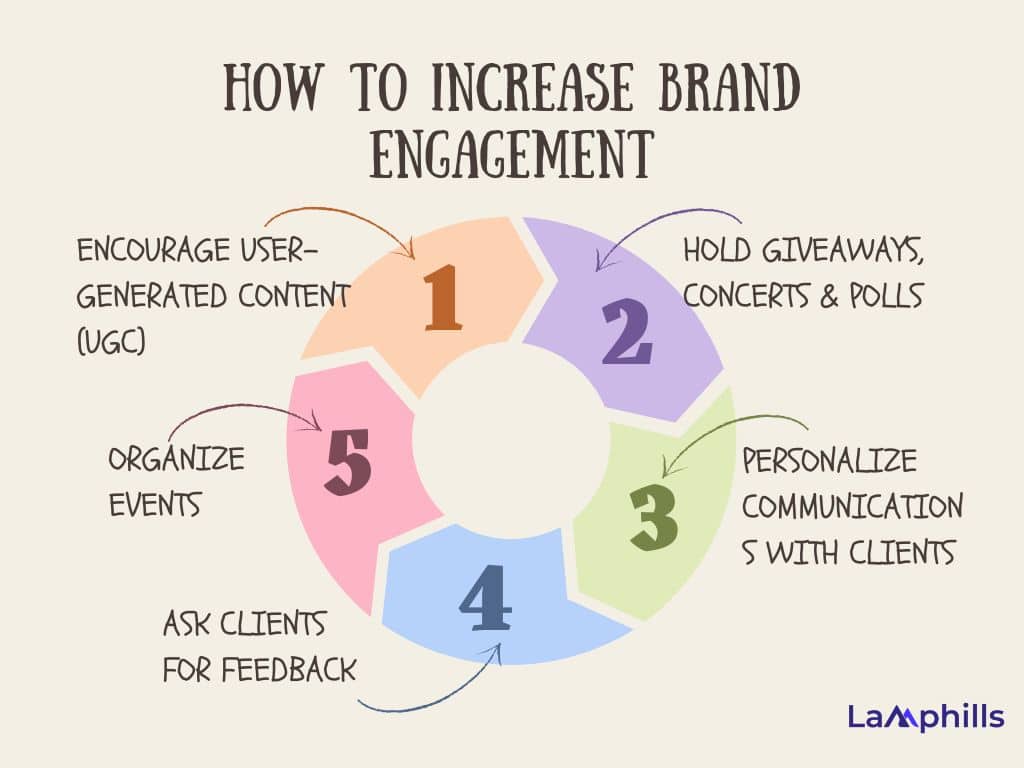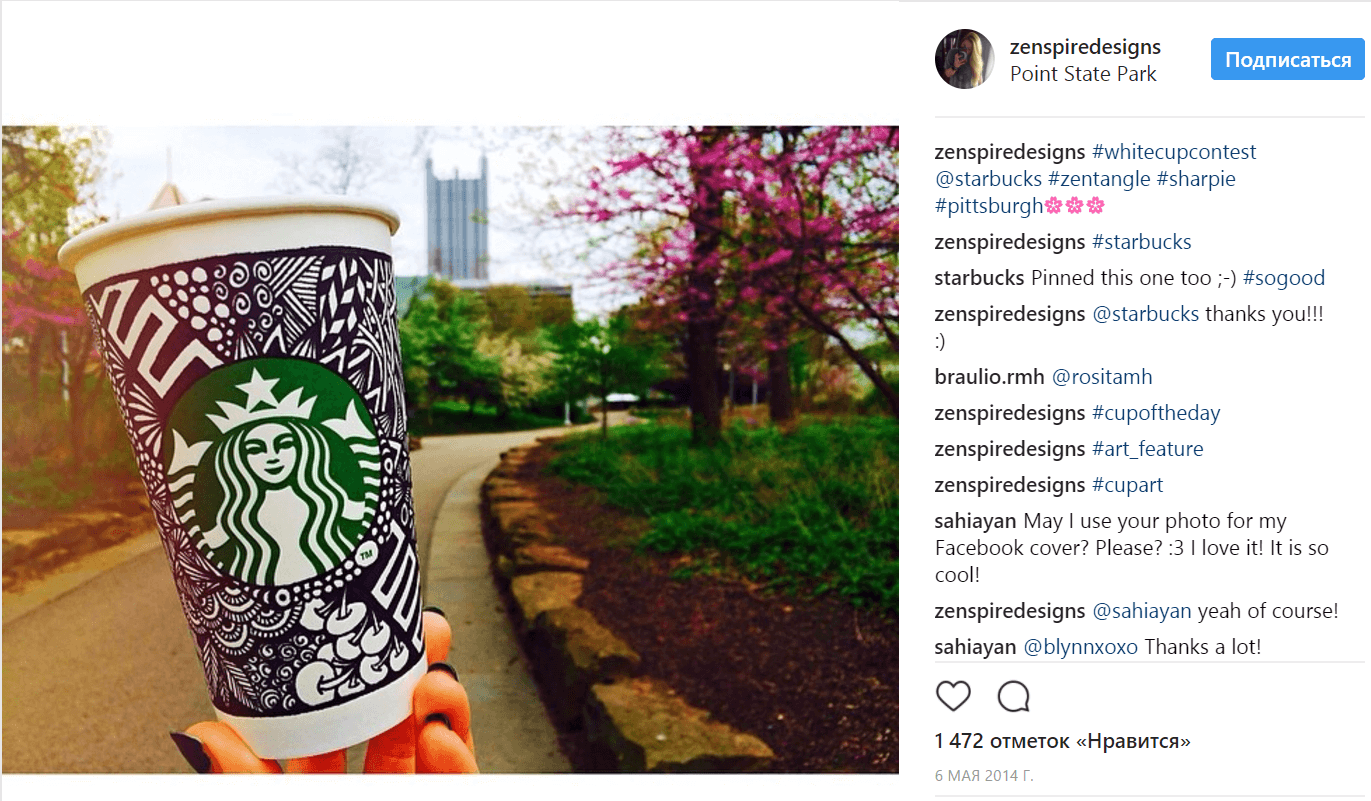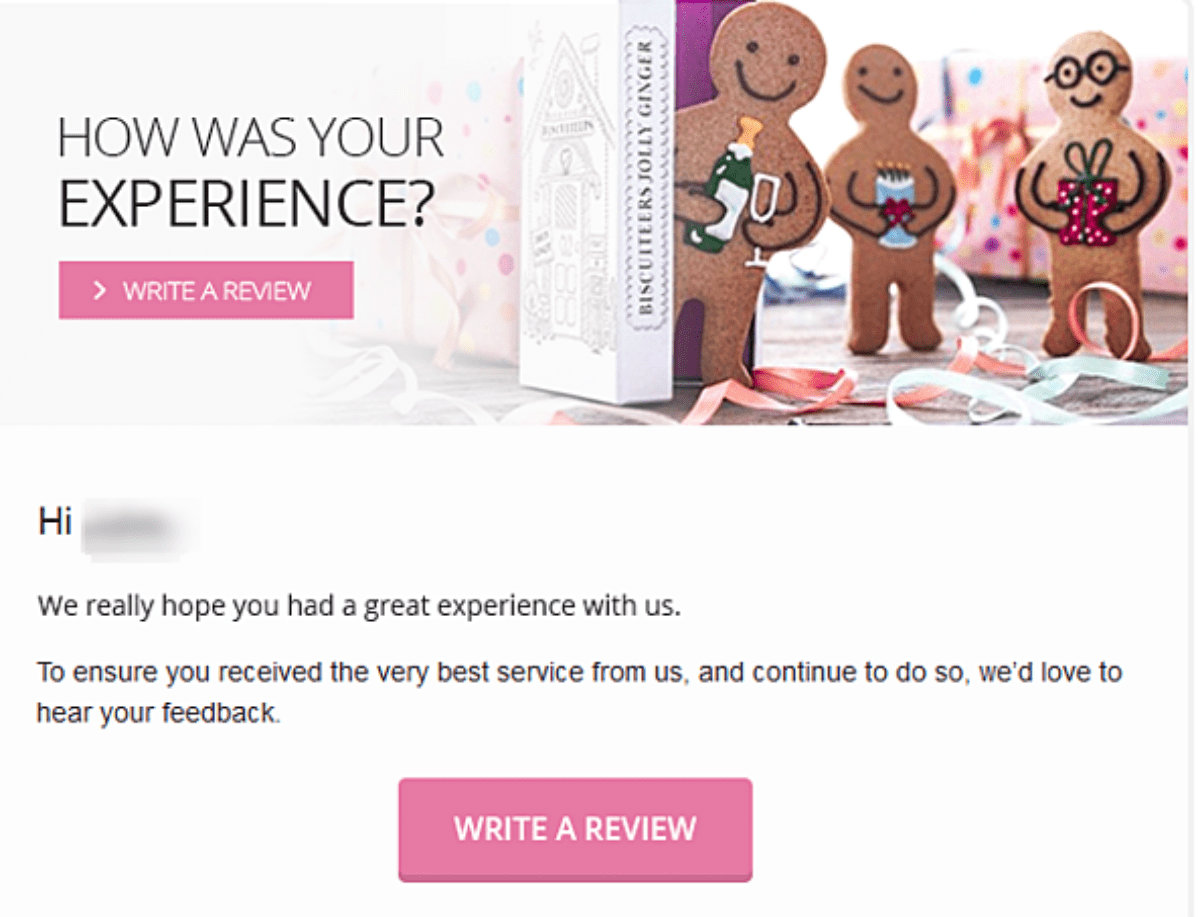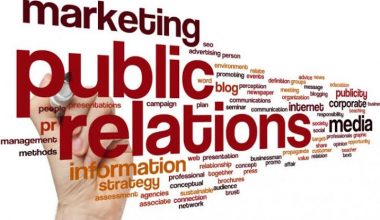Everyone remembers Coca-Cola’s “Share a Coke” campaign, which saw the company replace the logo on one side of the bottle with a person’s name. The top 150 most popular names were chosen and printed on millions of bottles. This was a brand engagement at its peak.
Although some people like me searched for their names to no avail, the campaign was well-received and rolled out in over 80 countries. It resulted in a 7% increase in Coca-Cola consumption among teenagers in Australia, with two out of five people in the country buying a “Share a Coke” pack. 76,000 virtual Coke cans were shared, and traffic on Facebook increased by 870%.
After a decade of decline in the consumption of Coca-Cola in the U.S., the revenue increased by 2.5%.
Now, one might assume that the primary purpose of the campaign was to increase sales. Nope! The primary goal was to make people love and identify with the brand. Once they managed to achieve that, everything else was just a domino effect.
Key Points
- Brand engagement is more than just establishing first contact with a potential customer – it’s about creating an emotional connection or a fulfilling transactional relationship over time.
- Internal brand engagement occurs between employees or other close stakeholders and a brand.
- External brand engagement occurs between public consumers and a brand, also known as brand awareness.
- From spreading brand awareness to improving the employee experience, creating a lasting emotional attachment between your brand and its audiences pays dividends.
- Brand engagement and customer engagement are similar, but they connect with audiences in different ways.
- As important as brand engagement is, it’s equally important to build an effective customer engagement strategy.
Understanding Brand Engagement
Brand engagement is the process of building and sustaining a commitment to a brand from its customers. This is one of the most important marketing goals for every business, as it allows companies to constantly interact with customers and increase their brand loyalty.
There are two potential avenues for brand engagement: external and internal.
External brand engagement is the bond that forms between your business and the public. This can include your target audience of potential customers, existing customers, and the general public who might encounter your brand. Often, brands believe this is the only way in which they engage with an audience.
Internal brand engagement is the connection with your employees or stakeholders. Employee engagement can be just as important as external engagement for building your brand.
How To Increase Brand Engagement
Internet marketing opportunities are only limited by your creativity. A great variety of channels, content formats, and tools that are available today let every brand find the best fit for their audience.
In this section, I will share proven practices that will help you boost your brand engagement.

#1. Encourage user-generated content (UGC)
User-generated content means content created by the audience of your brand. It’s extremely effective since it helps promote your company, increase brand awareness and engagement, reach new potential clients, and works better than any type of content created by the company itself. People trust other people.
UGC can be anything — photo and video reviews, comments, participation in contests, and giveaways. Very often brands let their audience generate fresh ideas and win a prize for the most creative one. To make this strategy work, analyze both your audience and the most promising channels. Hashtags on Instagram and Facebook will help your content go viral.
Below you can see how Starbucks collects UGC. The brand encouraged clients to create a new design for their cups and share it on Instagram with the corresponding hashtag. 4,000 people took part in the contest which definitely helped increase brand engagement on socials.

#2. Hold giveaways, contests, & polls
These content formats allow companies to skyrocket their engagement rates, bring in new clients, and increase sales. People enjoy interactive content as well as getting freebies. That is a win-win for both parties.
Giveaways are especially popular among young companies since they help build brand awareness and bring in potential customers. Motivate users to join your mailing list or share your brand with friends in exchange for an incentive. It can be a special offer, a discount, a free trial, or anything valuable.
Contests work almost the same way. Polls are popular on Instagram because they help brands increase customer engagement in posts and stories. Since users check stories first, they’re very likely to interact this way. Besides, it makes customers feel meaningful and lets brands discover their most active clients.
#3. Personalize communications with clients
Personalization is the key to building long-lasting relationships with customers. Clients won’t be committed to your brand if you know nothing about them and interact with your entire audience the same way.
To approach every user individually, make use of personalization and segmentation.
The first tool allows marketers to use clients’ personal information to send targeted messages. This data can include name, gender, country, birth date, address, etc. Segmentation enables brands to divide their audience into segments and address each segment with highly targeted offers. You can create segments based on demographics, interests, preferences, buyers’ journey stage, purchasing behavior, etc.
With segmentation, you can provide a client with a highly relevant offer at the right time. For example, if a user adds an item to their shopping cart without buying, they will be added to a corresponding mailing list and receive an abandoned cart email. Incentivize them with a discount or free shipping to boost sales.
You can send triggered emails automatically according to predefined events. Automation 360 is a tool that can serve this purpose. It allows marketers to create events and an email will be sent automatically after a user performs the necessary action — books a hotel room, places an order, adds a product to the shopping cart, registers for a webinar, etc.
#4. Ask clients for feedback
It’s hard to find any popular big brand that doesn’t collect their clients’ feedback. It helps companies not only better understand their customers, but find ways of improvement. You can reveal the weak points of your products and some issues with the customer support team.
Customers are pleased to share their opinions with the brands they adore. This way you’ll show that you care and appreciate the opinion of every user. Besides, you can reward those who really help your brand grow and improve.
Ask clients to leave comments on socials or product pages. You can also send a feedback request email in a week or two after the purchase.
Check out below how Biscuiteers asks clients to share their thoughts on products in a review.

#5. Organize events
Event marketing is a sure way to promote a brand. Events help brands acquire new leads, build brand recognition and awareness, educate leads, and increase engagement. This is all possible with the help of both online and offline events: webinars, seminars, conferences, thought-leadership events, workshops, etc.
You can use a bunch of marketing tools to promote your future event. Send an event invitation email, create a landing page, and promote events on social media.
Ways To Maintain High Brand Engagement
The most successful brands usually maintain a high level of customer engagement. When customers are engaged with a brand, they’re more likely to continue to buy from that brand and recommend that others do too.
With the increasing use of social media among businesses, companies now can engage with customers with the click of a button. However, they need to know how to do this most effectively.
From being incredibly transparent to using conversational marketing, below is a checklist of nine effective strategies for keeping brand engagement high:
How To Keep Brand Engagement High
Why does brand engagement matter?
Successful brand engagement can be transformative. From spreading brand awareness to improving the employee experience to increasing your revenue, creating a lasting emotional attachment between your brand and its audiences pays dividends.
Here are some of how brand engagement can be an asset to your business:
#1. Meet –and even exceed – customer expectations
To increase brand engagement, you’ll need to differentiate yourself and resonate with your consumers. Salesforce found that 64% of customers expect tailored engagements based on their past interactions with the brand. Implementing brand engagement strategies means becoming more aware of your consumers’ opinions and preferences.
This, in turn, helps you to provide a better customer experience and build a bond between you and them.
#2. Increases word-of-mouth marketing
The best marketing is marketing you don’t have to pay for. If customers feel like they have a strong relationship with your brand, they’ll talk about you – and spread the word to others in their network. With better brand engagement, awareness and loyalty will grow.
#3. Increasing cart size and sales
By showing that your brand can meet consumer needs, they’ll be much more likely to engage with you – and spend. Our own research has flagged that more than 60% of consumers think brands need to care more about them, and they’re willing to spend more if they feel cared for.
#4. Improving employee experience
Your brand’s reputation doesn’t just affect your customers’ opinion of you – it also affects what your employees and other stakeholders think of you. This means they are clear on what’s expected of them, feel there are opportunities to develop, and that their opinions count.
Getting your employees engaged with the brand can help you retain staff, and garner positive reviews of your working environment. It also fosters a corporate culture that can attract higher-quality hires in the future.
#5. Strengthening your competitive edge
Why do customers choose your brand over your competition? It’s not just because they’re aware of your brand – it’s because of your reputation. When your business has a reputation for great customer engagement, it gives you a competitive edge over other companies that might have a recognizable name, but no attached reputation for strong customer relationships or brand values.
Brand engagement tactics that leave an impression
Digital fatigue is a growing problem. Almost half of the Gen-Z customers report feeling digital fatigue and 56% of all consumers say they would stop shopping with a brand after a poor interaction. Crafting authentic yet creative customer interactions could be just the ticket you need to combat digital fatigue.
In short, investing in customer relationships is an investment in the future of your brand. So, let’s explore some creative ways you can build brand engagement for your business.

#1. Nurture a community
Bring customers together over a shared interest by starting a community. Community building takes time but it’s worth the investment. Building a base of devoted customers is a strong tool for increasing customer longevity, repeat purchases, and brand advocacy. This sense of belonging to a community breeds brand loyalty.
If you want to build a strong community of loyal customers, start by understanding your audience — what makes them tick, what their motivations and interests are, where they spend their time, and what challenges they often face. Creating a well-thought-out user persona will help you gain clarity on your community.
From here, tap into those customer interests and create a space to bring people together over their shared interests. This space could be held on an app, a social media channel, or in-person through community exclusive events — get creative and remember to set up a space somewhere where you know your customers will be active.
After the community is off the ground, it’s your job to keep it alive. Create valuable content, give your customers a platform to be heard, and plan exclusive events and activities for your community.
#2. Partner with influencers
Influencer partnerships are a surefire way to enhance brand reach and engagement. Invest in influencer marketing by collaborating with influencers that are aligned with your target audience. Like any partnership, influencer engagements require communication, collaboration, and strategy.
Influencer marketing works best when backed by strategy. Develop an influencer marketing campaign focused on a key goal — this could be boosting engagement, driving sales, or something else. Work with influencers who feel genuinely connected to your brand and audience, and tailor your strategy to each influencer to get the most out of the relationship.
Influencer partnerships provide social proof for your brand and expand your reach outside of your network, factors that will enhance brand engagement levels.
#3. Share exclusive offers
Words such as “exclusive”, “VIP” or “invite only” create an air of exclusivity around your brand. These exclusive offers and experiences trigger emotionally driven decisions. Research has found that targeted personalization and exclusivity increased the likelihood of purchase and the purchase amount given.
Whether it’s a sense of having something that others don’t, the fear of missing out, or the desire for immediate gratification, terms of exclusivity can work wonders for emotionally charged brand engagement.
Share exclusive offers that customers can only access by being a part of your community such as by joining your mailing list, attending an event, or by being an existing customer. Your target audience will feel compelled to be part of your community to access exclusive offers.
In turn, you’ll form stronger 1:1 relationships with your target audience and strengthen brand engagement.
#4. Host and attend events
Whether it’s online or in-person, attending and hosting events is a great way to build brand engagement. Events present an ideal environment to get closer to your target audience.
Keep an eye open for upcoming trade shows and eCommerce events that you can attend. You could attend as a guest, book a trade spot, sponsor the event, or enquire about being a speaker — the possibilities are endless! No matter how you choose to attend events, prioritize connecting with your target customers and building rapport with them face-to-face.
Alternatively, you can host your own events. From seminars, webinars, and live streams to workshops and in-person events, hosting your own events lets you connect with your audience and build your brand image. Partner with complementary businesses and industry experts to really boost the impact of your events.
#5. Run competitions and challenges
Everyone loves a challenge, so why not find fun, challenging ways to spark engagement? Encourage healthy competition by creating challenges and contests for your brand audience.
Offering prizes for entering can ramp up engagement while getting involved in community challenges and contests can make people feel like they are part of something bigger. When designing a challenge, be sure to create a sense of FOMO (fear of missing out) and inspire desire by showcasing what customers can gain from participating.
Challenges and contests could be anything from social media quizzes to raffles, leaderboards, puzzles, and games. Have fun and create a challenge that’s bound to boost engagement.
#6. Offer live shopping
Turn online shopping into an interactive experience with live shopping.
Think of live shopping as the digital version of QVC or the Home Shopping Network. It unites digital shopping experiences with social interaction and engagement.
Live shopping turns online shopping into an immersive experience. Customers can get involved through Q&As and real-time chat. Meanwhile, sellers can share reviews and recommendations to support purchase decisions. Add in real-time limited offers, live demos, and guest appearances from coveted influencers to create a live shopping experience that evokes feelings of excitement and urgency.
Through live-streamed broadcasts, eCommerce brands are capturing their audiences’ attention and boosting sales. In 2019, live shopping generated $60 billion in global sales.
#7. Join forces with another brand
Building brand engagement doesn’t have to be a solo mission. You can join forces with another brand to boost your engagement levels. Brand partnerships are a powerful tool for building your brand visibility and engagement.
Find a brand partner that shares your audience, but isn’t a direct competitor. Your ideal collaborator could be industry adjacent, an integration partner, or something your customers frequently use alongside your brand. You should be able to leverage each other’s existing audience to grow both brands’ reach and engagement.
Brand partnerships could involve collaborating on a limited edition product line, hosting an event together, or creating an exclusive challenge. Have fun with brand partnerships and choose a partnership tactic that mutually benefits both parties.
Brand Engagement vs Brand Awareness
Both terms belong to the key concepts of brand marketing. This approach implies reaching several objectives each brand needs to pursue to be successful. They include brand awareness, brand engagement, brand loyalty, brand advocacy, brand equity, brand identity, and brand image.
Brand awareness comes first when designing your brand strategy. It requires marketing activities aimed at raising awareness of your brand. Potential clients should be able to recognize your brand among competitors and recall your products. In other words, if they find a need for a product they haven’t used before, your company’s name should be the first to come to people’s minds. Brands invest a lot in advertising on various channels to achieve this goal.
After you build brand awareness, you should work on increasing brand engagement. Users need to be interested in your company to make a purchase. So, let them interact with you on several channels — let them know that their opinion matters.
The higher your brand engagement, the better the relationship with your audience, resulting in more sales.
Brand Engagement vs Customer Engagement
People often use customer engagement and brand engagement interchangeably, but they differ in terms of both purpose and implementation. Brand engagement is about creating an emotional connection between the customer and your brand. It is considered a pull strategy as it aims at drawing consumers to the brand.
The impact of brand engagement may or may not be instant, but it’s definitely long-lasting.
Customer engagement, on the other hand, is a push strategy where the product is taken to the customer. It is about making your customers or prospects take a certain action.
A customer engagement strategy is targeted at a narrower audience that’s already aware of the brand or the product the company is offering. The impact of a customer engagement campaign can be measured almost instantly. The customers/prospects are pushed towards taking actions like making a purchase, upgrading the existing product, etc.
So, what’s more important—customer engagement or brand engagement?
It’s not about choosing; instead, it’s about prioritizing. Companies need to find the right balance between the two. They’re like bread and butter—they work best when implemented together. Often companies make the mistake of prioritizing the wrong activity at the wrong time, which will lead to the waste of both time and money.
As important as brand engagement is, it’s equally important to build an effective customer engagement strategy.
Recommended Articles
- How To Check A Company’s Reputation in 2024 (Simplified)
- HOW TO MEASURE BRAND AWARENESS: Tips To Improve Your Brand Strategy
- 7 Simple Practical Steps to Build Brand Loyalty
- Unlocking the Power of Brand Equity: A Comprehensive Guide
- Brand Authority: How to Elevate Your Reputation and Stand Out
- How To Build & Measure Brand Affinity: The Ultimate Guide to Fostering Lasting Connections






